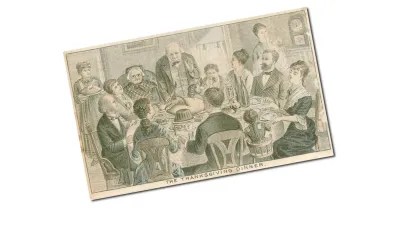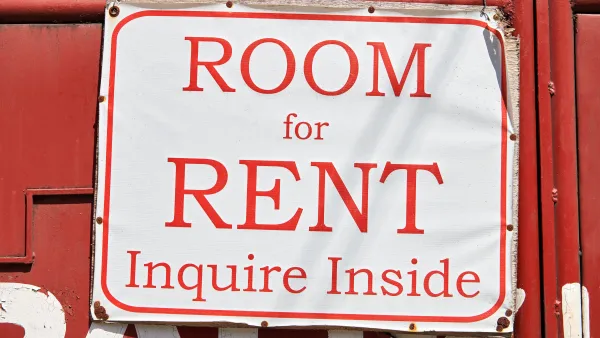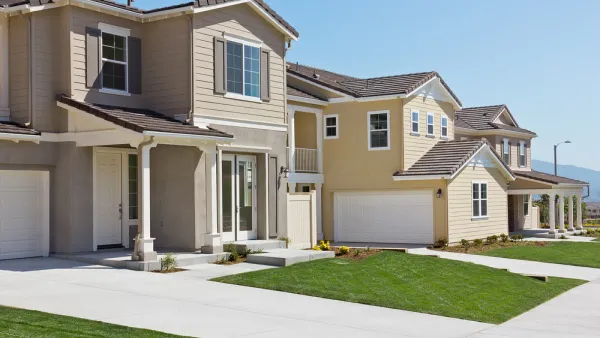Kaid Benfield takes a moment to reflect on the changing nature of the American household and how it will shape our cities in the coming years.

Ah, the holiday season – a time to gather around the table with loved ones, to keep old traditions alive, to make new ones as our families change and grow. Traditionally, the nuclear family has been painted as an anchor for these traditions, but Benfield poses some challenging questions for that particular, conventional view of American society.
"Does our storytale version of family life resemble real family life? Does it exclude people who are not part of or close to their families? Is the concept of 'family' changing, with implications for the planning profession? The answers are, of course, seldom; usually; and definitely."
According to recent reports from the U.S. Census Bureau, the American household is becoming an increasingly heterogeneous thing. Households composed of individuals, unmarried couples, and never-married single mothers are all on the rise, as two-parent families (especially those with working fathers and stay-at-home mothers) have followed a steady decline since the 1960s.
That's not to say, of course, that two-parent families have fallen into obscurity; they still represent a solid majority of all family households.
"Rather, we have a diverse and changing array of household types and circumstances that smart planners and businesses will seek to accommodate. The census data show that the growing parts of the housing market are nonfamily households, smaller households including people living alone, unmarried couples, single-parent households with kids, and older households."
FULL STORY: Meet the modern American family

National Parks Layoffs Will Cause Communities to Lose Billions
Thousands of essential park workers were laid off this week, just before the busy spring break season.

Retro-silient?: America’s First “Eco-burb,” The Woodlands Turns 50
A master-planned community north of Houston offers lessons on green infrastructure and resilient design, but falls short of its founder’s lofty affordability and walkability goals.

Delivering for America Plan Will Downgrade Mail Service in at Least 49.5 Percent of Zip Codes
Republican and Democrat lawmakers criticize the plan for its disproportionate negative impact on rural communities.

Test News Post 1
This is a summary

Test News Headline 46
Test for the image on the front page.

Balancing Bombs and Butterflies: How the National Guard Protects a Rare Species
The National Guard at Fort Indiantown Gap uses GIS technology and land management strategies to balance military training with conservation efforts, ensuring the survival of the rare eastern regal fritillary butterfly.
Urban Design for Planners 1: Software Tools
This six-course series explores essential urban design concepts using open source software and equips planners with the tools they need to participate fully in the urban design process.
Planning for Universal Design
Learn the tools for implementing Universal Design in planning regulations.
EMC Planning Group, Inc.
Planetizen
Planetizen
Mpact (formerly Rail~Volution)
Great Falls Development Authority, Inc.
HUDs Office of Policy Development and Research
NYU Wagner Graduate School of Public Service





























